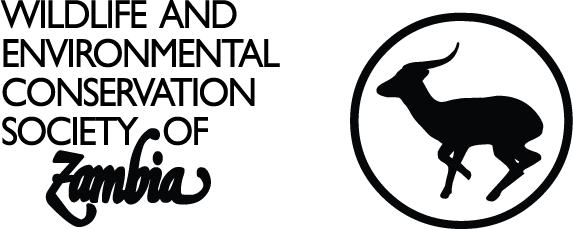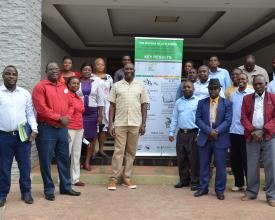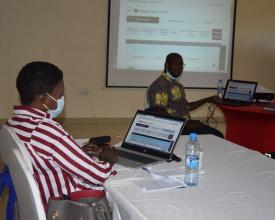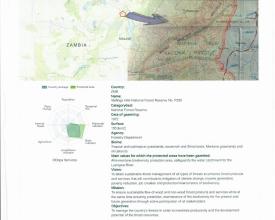
Using IMET to identify Priority Actions for Improved Management Effectiveness of the Mafinga Hills Forest Reserve in Zambia

This solution is about the management effectiveness of protected forest areas. It identifies the Integrated Management Effectiveness Tool (IMET) as an appropriate tool for identifying priorities for action in enhancing the management effectiveness of protected forest areas. The Wildlife and Environmental Conservation Society of Zambia (WECSZ) applied the IMET in the Mafinga Hills Forest Reserve, which provided an opportunity to create awareness about the reserve and inform decisions on potential improvements for management effectiveness. Mafinga Hills Forest Reserve is a protected forest area designated mainly for the protection of the Luangwa River headwaters, one of the four main river systems that drain Zambia. Illegal logging, frequent bush fires, and unsustainable agriculture practises are the main challenges addressed by this solution.
Context
Challenges addressed
There was no management effectiveness evaluation system in place at the Mafinga hills forest reserve. Both the management and governance of the forest reserve are poorly coordinated. While conservation efforts at the reserve are guided by a conservation action plan, the reserve has no Forest Management Plan (FMP), thus compromising conservation efforts currently undertaken in the reserve. The most common environmental challenges in the reserve are forest degradation resulting from illegal logging and cut-and-burn agriculture (known locally as Chitemene), as well as uncontrolled and frequent bush fires. Furthermore, there has been an increase in the loss of streams and rivers due to siltation.
Location
Process
Summary of the process
Stakeholders are identified during the project design stage. The types of stakeholders identified will determine whether or not the IMET evaluation process is successful. Capacity development is provided to key stakeholders in the assessment in order for them to conduct the assessment effectively. The IMET assessment's main output is an analytic report. What good is the report if the findings are not effectively communicated to the various stakeholders? Effective management of a protected forest area will rely heavily on the combined efforts of the identified stakeholders. As a result, it is critical that the findings be widely disseminated.
Building Blocks
Stakeholder Identification
IMET is an integrative tool. It requires input from people who are in charge of the protected area, and also those who have a recognizable interest in the area but are not directly in charge. Prior to implementation, we determined who the right stakeholders were, such as key Government agencies, including the Forestry Department, which was in charge of managing the forest reserve, and the office of the Surveyor General, who were not directly connected to the management of the reserve but were custodians of the reserve maps. Equally important among stakeholders are Civil Society Organizations (CSOs), local community groups, and traditional leaders. Government and CSOs were engaged in project design and implementation. We engaged the stakeholders first by writing official letters with simplified explanations of the IMET process. The letters outlined the information gaps specific to each stakeholder. That way, the stakeholders were able to provide relevant information and documents that would feed into the IMET evaluation. Secondly, the stakeholders were invited to attend two workshops; 1. data collection, and 2. data collection and validation. These workshops aimed to create ownership and validation of the results generated.
Enabling factors
Stakeholders had been involved throughout the project's development, ensuring the accurate establishment of knowledge gaps. Our communication with the stakeholders was transparent and adapted to each stakeholder in the appropriate language. Through stakeholder involvement in project design, we were able to determine what tools were already being applied in Zambia and which tools would generate the type of information needed to measure management effectiveness in a protected forest area.
Lesson learned
When you do stakeholder mapping, do it well, look outside the box. Perform thorough stakeholder mapping and analysis. Decide where each stakeholder will be useful in your project cycle. Some stakeholders will be good starting points in the project design but may not be essential in implementation. For instance, in our project design, we touched base with the Department of National Parks and Wildlife (DNPW) to learn about Protected Area Management Evaluation (PAME) tools that Zambia was already implementing. We learned about various tools and their weaknesses. However, DNPW was not present in our project area and had very limited information about the Mafinga Hills Forest Reserve. Thus, although DNPW was essential in the design of the project, that is, informing the PAME tool to use, they would not be able to provide the relevant information needed in the assessment. That, however, does not mean such stakeholders should not be informed of project processes or results. It is always important to feed back to the stakeholders.
Capacity development
Field missions associated with IMET only take a few days to conduct. It is therefore important that the project team be adept at using the IMET prior to the field mission. Building the technical capacity of the team will enable smooth implementation and reduce the risk of overrunning timelines. In our project, we underwent a series of capacity development sessions. During project design, we underwent several online training sessions organised by BIOPAMA. These meetings provided the knowledge and skills needed to conduct the data collection and analysis within a short period of time. Equally important is ensuring that the computers to be used are up to date in terms of specifications. Thus, capacity development includes technical and logistical aspects of the project.
Enabling factors
Trained IMET coaches were on hand to provide support during project design and implementation. In addition, BIOPAMA was flexible enough that they allowed us to upgrade the computer that was used in the assessment. This was important because IMET is a computer based tool that requires advanced computer specifications.
Lesson learned
Before implementing IMET, find out the capacity levels of your team. If no one on your team has experience using IMET, reach out to others who do. If you are sourcing funding from a grant scheme, find out from the funder if they have an arrangement with coaches who can support your project or simply include training consulting in your project design.
Effective communication
Effective communication is an important aspect of the IMET assessment. Of course, effective communication between the project implementers and other stakeholders, including the funding institution(s), is needed during project development and implementation. However, in the IMET assessment, it is critical that the results of the assessment are effectively communicated to stakeholders. The stakeholders include those involved in the assessment and others who may not have participated. In our case, we organised an information sharing event at the national level to which different national stakeholders were invited. In addition to the presentations made at this event, information packs providing an analysis of the IMET results were shared with all participants. We also developed a summary results banner that was later deposited (and still is) at our project office. It is the first thing anyone sees when they walk into our office. We also developed simplified brochures in three local languages for community stakeholders.
Enabling factors
A simple communication strategy was included in the project design. It detailed how results would be shared with stakeholders of different backgrounds.
Lesson learned
To effectively communicate, we must acknowledge that we all perceive things differently. As a result, understanding others' social context must serve as a guide for our interactions with them, and we must use this understanding to choose the best means of communication. The methods you use to approach learned people or technocrats may not work for local communities. For instance, we found out that our local communities could not interpret the indices shown in our analysis report because, in their context, percentages did not mean anything. We therefore translated the indices into simplified explanations that they would make sense of.
Impacts
In 2021, WECSZ implemented the first IMET assessment in Zambia. The assessment process generated a lot of interest among different stakeholders, including government agencies. More specifically, the IMET assessment at the Mafinga Hills resulted in:
-
Increased technical capacity for local stakeholders to implement IMET. Through the project, the technical capacity of seven (7) members of the project team was built.
-
Information about the Mafinga Hills Forest Reserve is accessible. Before the IMET, a lot of information about the reserve was missing. The missing information included survey maps and boundary descriptions.
-
Priority actions, ranked by importance, are identified. The most critical priority identified was the development of an Integrated Forest Management Plan (IFMP) for the Mafinga Hills forest reserve.
-
Increased community awareness of the value of the Mafinga Hills forest reserve. With priority areas identified, communities were able to participate in the design of a follow-up project.
-
Improved relationship with conservation partners. The improved relationships established a foundation for potential collaborative projects at Mafinga Hills.
Beneficiaries
- Department of Forestry in the Ministry of Green Economy and Environment
- Mafinga Town Council (local authority)
- Local communities
- Wildlife and Environmental Conservation Society of Zambia (WECSZ)
- Conservation organizations looking to invest in the landscape
Sustainable Development Goals
Story
On August 29, 2021, Mr. Martin Musaba (Acting Principal Forestry Officer for Muchinga Province) expressed a desire to adapt the IMET to his work environment to shape his work schedules. This was following a capacity-building training that culminated in the pre-filling of the IMET for Mafinga. At the time, Mr. Musaba was responsible, through the District Forestry Officers (DFOs), for the management of all forest reserves in nine districts of Muchinga province. He added that the IMET assessment conducted for Mafinga was a pioneer in forest management effectiveness evaluation. "At a personal level," he said, "I would like to use the IMET in my annual work planning. I would also appeal to you to extend this type of assessment to all our forest reserves across the country. I know for a fact that the management aspect of forest reserves in Zambia is very poor, partly because we do not conduct regular assessments that would inform better management practises."










